CYBERCRIME

PAGE 4
THE WORLD COMES TO CHINA

PAGE 12
ON TOP OF THE WORLD IN AFRICA
PAGE 21

CYBERCRIME

PAGE 4
THE WORLD COMES TO CHINA

PAGE 12
ON TOP OF THE WORLD IN AFRICA
PAGE 21
Cybercrime In The Financial World PAGE 4
Innovation Isn’t Always Reinvention .......................... PAGE 6
Avoid Being The ‘T’ PAGE 9
Financial Services Outsourcing –Regulatory Obligations
PAGE 10
The World Comes To China PAGE 12
Bond Connect – A Game Changer PAGE 16
On Top Of The World In Africa ............................... PAGE 21
In Conversation With... PAGE 24
The Belt-and-Road Initiative PAGE 26
Regional Integration Of Capital Markets: Lessons From Europe PAGE 28
A Foodie’s Guide To Singapore PAGE 30
My Perfect Day In The Big Apple .......................... PAGE 32
Message From Vienna ............................................. PAGE 34
Vienna 2018 Photos PAGE 36
Future Events PAGE 38
About TNF ................................................................ PAGE 39
Summer has been and gone and we are now heading rapidly towards the final few months of 2018. Our Cape Town and Vienna Meetings already seem a relatively distant memory, and we are now working on our 2019 events (see page 38). In the meantime, we are back on the road this Autumn seeing our friends in The Americas and Asia when we visit New York and Singapore. Many of you will be reading this at one of those Meetings…
We are delighted to publish Issue 2 of The Network Forum Journal with some incisive industry commentaries, and some thoroughly interesting articles: on what to eat in Singapore, a perfect day in New York penned by a mystery Network Manager, a gripping tale of an epic climb of Kilimanjaro by one of our Founding Partners. These are all things that make us part of The Network Forum Family – the nature of the job for all of us is driven by an interest in what is going on around the world: whether it’s the food, the people or exploring the underbelly of a City to see what makes it tick.
All of this informs us further about the markets we are operating in - and makes it that much more special. But we also need to home in on specific issues, such as Cybercrime, Innovation, Outsourcing, China’s Belt and Road Initiative and more: these are all reflected in articles within this very Journal from which we hope you glean valuable insights.
We are witnessing big movements in the geopolitical space too: whether it is the continuing decline in Venezuela, volatility in the African markets, the tragedy of Myanmar, or the ongoing Syrian civil war. But we in Europe are not immune to these regional market pressures – we most certainly have our own and Brexit is still weighing down on us. Unsettling times indeed. And keeping informed on how these macro issues impact market specific operations in the wider context is key.
We hope to continue to facilitate dialogue and help our community to not only address these market challenges together, but also to adapt to the monumental change in technology that is affecting our everyday lives, as well our lives in the financial services world.
We look forward to accompanying you on this journey and to continue our personal and professional growth together. See you on the road!
Andrew Barman Managing Director THE NETWORK FORUM
The title of this article brings to mind images of faceless hackers in countries beyond the reach of law enforcement defeating expensive bank cyber-security systems to steal from customer accounts and credit cards. The reality is far more complex.

Probably the most visible and lucrative crime-type today is business e-mail compromise. A crime that has seen a staggering 13 billion USD in losses to victims reported to the FBI since 2013! There are a number of variations on such frauds, but e-mail accounts of corporate employees responsible for financial transactions are commonly targeted. Once breached (usually via social engineering the employee into divulging credentials or by being tricked into installing credential-stealing malware) the attackers learn how communications and financial transactions are conducted. Then they wait for an opportune time to hijack invoices and redirect payment information to a fraudulent account.
What does this have to do with bank security? Very little, but the victim once realising the fraud often turns their anger to their banks who ‘allowed’ the funds to be fraudulently transferred. No surprise as these are often huge sums. The reputational side-effect of these incidents
is damaging to financial institutions and negatively impacts client relationships. But how and what should they do to help their customers avoid losses to this rampant crime?
Then there is insider trading. Enhanced fraud controls make it ever more difficult to monetise stolen account and card data. Organised crime recognises that ‘information’ represents the motherlode in terms of high value / low risk. Profiting via predicting market movements is difficult to detect and enormously lucrative. Consider when credit cards are stolen: ultimately their fraudulent use will eventually be detected, and the source of the breach uncovered (and presumably remediated). Theft of information is different. The use of insider information for profit may never be detected provided the attackers do not try to resell the information on the criminal underground and simply use it for their own gains.
Access to such information can take many forms. Breaching cyber security defences and quietly accessing trading information is one such method. But the more insidious approaches of corrupting an insider to allow access to data; hacking the mobile devices of targeted employees or gaining access to the communications of
privileged users are also potential vectors. High wealth clients increasingly insist on using modern communication methods via smartphones to interact with brokers and traders making compliance oversight a headache and risks of leakage of privileged information ever more likely.
A further example of modern financial crimes revolves around advances in mobile payment methods and the rise of blockchain/cryptocurrency technologies. Our investigations into the numerous frauds and thefts involving new technologies have disclosed that inadequate security testing, an inability to think like the criminals and a lack of red-team exercises (attacking the technology in the same way a real adversary would to uncover the gaps before they do) are why many such attacks have been successful. Technical experts are extremely gifted at building attractive financial applications and platforms: less so about predicting misuse of these systems.
skillsets which may not always predict criminal ingenuity, but are far more likely to do so than a purely technical approach and are much more likely to truly engage the business as part of the process.
Interestingly, two banks have recently adopted this approach, but from different angles. UK banking giant Barclays have just appointed a new CSO with a storied background in predominantly physical security/ investigations to oversee their new merged security function. Similarly, the National Australian Bank (NAB) have gone down the same route, but instead have chosen a CSO with a largely cyber background.
The merits of such decisions in both the new organisational structures and the desired qualities of the incumbents will no doubt be subject to debate. The important point though is that we are still far from eliminating cybercrime in the financial world, and the reason is largely down to human fallibility and criminal ingenuity. Devising better methods for countering criminal activity is to be applauded and encouraged. The old methods are clearly failing us.
Paul Jackson Managing Director & Asia-Pacific Leader, Cyber Risk (Hong Kong based) , KROLL
The common theme here is criminal ingenuity. Wherever systems, platforms, applications and business processes are built, you can guarantee that someone somewhere will be studying how to subvert them for profit. ISO 27001 certifications and information security frameworks are all well and good and are necessary for effective cyber security. The same applies to the expensive solutions designed to protect information and to seek anomalies and aberrations within usual business operations in a financial institution. But how does this help when a malicious employee takes a photo of their screen using their phone? Or another unwitting employee has their phone hacked and the microphone activated?
Little wonder that some financial institutions are exploring new ways of addressing security. Following the lead taken by a few major technology companies, cyber security is increasingly being merged with physical security (and commonly internal investigations) where a Chief Security Officer (CSO) sits over all of these functions. This recognises firstly that security is at heart a ‘human’ problem – not just a technical one. Secondly, it acknowledges that information security needs to be thought of in a multi-dimensional manner which encompasses physical access and employee behaviour. Lastly it enables collaboration of broader problem-solving
A further example of modern financial crimes revolves around advances in mobile payment methods and the rise of blockchain/ cryptocurrency technologies.
For the majority of global investment banks and broker dealers, 2017 shows profits finally returning to pre-crisis levels. Institutions on both sides of the Atlantic are re-discovering their place in the world and re-defining company strategy to meet the needs of tomorrow’s client, in a cost-constrained world.
But this re-discovery increasingly depends on the sustainability and relevance of its own technology and platform architecture. The rosier picture of rising profits and greater competitiveness in new markets can soon become clouded when the complex web of architectural innovation and legacy technology is not well-informed by the very strategy that a company wants to pursue. Technology should support a business – not determine its evolution.
Ethereum, developed in 2014, has since grown to become one of the leading blockchain platforms today for building such P2P applications, commonly referred to as decentralised applications or dApps.
Large banks and broker-dealers are complex, often multi-jurisdictional organisations, operating across siloed departments and business lines, and each often comes with different core platforms and systems. To harmonise these disparate systems successfully, institutions must consider taking a more holistic approach to adopting and embedding technological solutions. When examining the challenge legacy systems pose, the root of a potential transformation may not be in technology. More often than not, an institution’s operating model is also in need of scrutiny.
Any significant change in technology will be disruptive, so it is important to make it count. By re-examining its capabilities and considering alternatives against objectives, a firm can ensure that the cost of upgrades is justified, instead of an expensive band-aid.
The pace of innovation is so rapid that firms are caught between the cost of maintaining legacy systems, while simultaneously being forced to expend capital on the newest technology to stay competitive with nimbler start-ups.
Managing all these different components requires a flexible and scalable platform capable to integrate different solutions that address new challenges and fulfil unforeseen client needs as they emerge. Part of rethinking an operating model may mean reconsidering the entire architecture, or it could include outsourcing tasks that are no longer core to the business. Efficient business transformation is ideally about building an ecosystem of more holistic solutions to support a desired targeted operating model.
Selecting a partner with the ability to innovate with the big picture in mind is essential, and enables a firm to futureproof the business against future challenges. Just because nascent products and services e.g. crypto-currency custody might not form current core client requirements, that is not to say they won’t be in the future.
In 2017, the industry was focused on MiFID II and 2018 has introduced its own regulatory hurdles.
Technological solutions should encompass end-toend support to ensure compliance needs are being met as part of the business strategy. Similarly, it is essential to consider technology not only as an external factor influencing the business, but at the core of the development of that strategy.
Nowhere is this clearer than in the realm of data management. Every business understands its strategic business value, but legacy storage systems can impact data security, balloon costs, and threaten business continuity. Looking to cloud solutions, firms can take advantage of the sufficient bandwidth, security and ease of access tackling the migration of data between legacy systems and new platforms throughout transition periods.
Financial institutions have understood this and taken action by teaming up with fintech firms to explore new technology independently through their own innovation labs.

Technology should be built for a business not the other way around. To choose the right technology, a firm must do so in concert with their business strategy, rather than letting the tail of technology wag the dog.
Likewise, choosing the right partner is pivotal. More than just helping to stay ahead of the emerging technology curve – the right partner will help deliver a flexible operating model that is prepared to handle any new business challenges.
Mark John Head of Product and Business Development, BNY Mellon’s Pershing and Broker-Dealer Services EMEA

As bigger fish in ever smaller ponds, bulge bracket firms with growing global footprints are exposed to more risk than ever. To be truly globally-minded, firms could operate on a truly global technology ecosystem that takes into account the patchwork of international regulation, but also offering capabilities designed for localised operations.
It is key to utilise external partners who can provide not only the necessary infrastructure, but also deliver the local operational support to guide the transition to a global ecosystem.
Pershing provides financial institutions with sophisticated front-end technology and flexible middle office capabilities with execution, settlement and custody services, supported by a robust regulatory and compliance framework with dedicated client asset experience and expertise.
It is key to utilise external partners who can provide not only the necessary infrastructure, but also deliver the local operational support to guide the transition to a global ecosystem.
Innovation isn’t always reinvention: a holistic solution to a legacy problem
millennial; experience is valuable and the industry must learn from its mistakes. We have been innovative in the past and need to adapt our model going forward. The NW Manager must work to remove the fear of disruptive technology, but instead help realise the opportunity for custodians to differentiate their offering from a technology, rather than price, perspective.

The answer is to avoid being the ‘T’. A ‘T’ is someone who has a depth of knowledge in one area but very little left and right of their specialism, they do not have a concept of the bigger picture and are unwilling to open themselves to new ways of thinking or challenge the status quo. ‘Ts’ regurgitate stories of robotics and distributed ledger technologies, with no real belief that this is the future or that regulation will allow it. NWM is not a place for the ‘T’; NWM has to be innovative and visionary, always looking for the next opportunity. NWM must ensure that the bank is correctly partnered with like minded custodians who constantly challenge their existence and place in the market.
Most banks have well established custody networks and, NWM therefore needs to move on from the ’T’s’ approach of long meetings with lovely biscuits, writing dull call reports that no one reads and periodically hammering custodians for fees. The future NW Manager needs to challenge everything including the concept of a custodian. They must, in an Elon Musk way, ruthlessly seek to add value in every action they undertake. Most importantly, they should be visionaries, understanding where the post trade market is heading and ensuring their bank is at the forefront.
The ‘new’ NW Manager must be hungry for real time MIS (data points are key in optimising large global organisations). They must be mindful of the technology arms race within the financial sector and seek out the enlightened custodian in meeting the post trade challenge - taking two days to settle a trade will no longer be acceptable. ‘New’ doesn’t necessarily mean
As gatekeepers, NWM has the responsibility to guide the Investment Bank’s post trade strategy, by filtering the products and service offerings from their custodians and exposing the business and tech to genuinely innovative market leading concepts. NWM must align to the bank’s strategy, spending time with the business understanding the friction points, frustrations and gaps. Where possible, issues should be resolved in-house, but NWM can add value by looking for the appropriate market solution. NWM must petition, drive and embrace market change with custodians, infrastructure and national governments. Failure to open up markets and modernise will quickly result in a bank becoming irrelevant and a Fintech filling the gap.
The front office will always lead the bank; however, if Operations is well informed, avant-garde and value-add, it will propel the whole bank forward. Do not be the NWM ‘T’ - challenge everything, resource where you can be impactful and open yourself to technology and new concepts.
Daniel Hickey Relationship Manager, Barclays Investment Bank
Investment banks no longer just compete with other banks, but with every other organisation in every industry including startups. Disruption is present everywhere, but few industries have experienced the level that exists within financial services. It’s within this backdrop, where the very existence of investment banks is questioned, that we ask what NWM can do to ensure that banks have a part in our financial future.

IOSCO states that “The regulated entity should conduct appropriate due diligence in selecting thirdparty service providers.” Again, network managers will know how important it is to conduct a rigorous review in the selection of any service provider. This not only demonstrates that all commercial and business needs in appointing a particular service provider have been satisfied, but provides a level of comfort that the provider’s capabilities have been seen and tested.
Banks and institutional investment firms are increasingly looking to extend their outsourcing arrangements to reduce costs, manage risk and achieve operational efficiencies. Regulators have been quick to recognise that the risk chain is being extended. Their desire to minimise the risks associated with outsourcing has seen the development of regulations, directives and guidelines to establish effective governance, ownership, procedures and controls within their jurisdiction.
We were recently mandated to research international standards for the governance of outsourced services by a large global, insurance provider. Our client wanted to implement comprehensive governance policies so that it could manage its outsourced relationships, in a globally compliant manner. Some of the markets and regulatory bodies compared in our study were:
The final phase of the lifecycle, Termination, focused on contingency arrangements. The regulatory guidelines state that it is best practice to have developed contingency plans that would enable the business activity to be provided by an alternative service provider or brought in-house if required. A number of global custodians use two sub-subcustodians in every market to satisfy this requirement. A wise approach when making an outsource appointment is to plan your exit at the same time.

The governance of outsourced relationships can be broken into three life cycle phases; Initiation, Oversight and Termination. We found that each phase can be linked directly to the regulatory guidelines and their requirements.
Using the global regulatory guidelines as a standard requirement, we worked to create a policy to establish and document the necessary level of control, structure and consistency across all directly appointed and client directed outsourced relationships.
The initiation phase focused on the selection of third-party service providers and involved two main steps; (i) The formal selection and due diligence process and (ii) establishing the governance of the relationship going forward through legal and service level agreements (“SLAs”).
Thomas Murray has developed technology to manage and streamline these complex processes. Supplier Select for Financial Services (“SSFS”) is our web-based platform for the drafting, issuing, monitoring and scoring of RFI/RFP and Due Diligence questionnaires. We and our clients have developed and used this technology for over 10 years. It is widely used by some of the largest financial services organisations globally to support selection and due diligence exercises.
All of the regulatory guidelines we reviewed required legal and service level agreements that clearly describe all material aspects of the outsourcing arrangement, including the rights, responsibilities and expectations of all parties. Clearly, every outsourced relationship is governed by a legal agreement but not all have SLAs. The ability to monitor and measure the service provider’s performance is critical for the next phase; Oversight.
Oversight and monitoring of service providers varies but the consistent requirement we found across the regulatory guidelines was the need for regular reviews and demonstrable monitoring of the performance, risk and financial condition of the service provider. The oversight and monitoring of a service provider can be split into performance/operational measurement and the reviewing of commercial elements of the relationship.
The resources and methodology for such monitoring vary by type of service provider but usually have one similarity: questionnaires. These could be in the form of scorecards, RFIs, RFPs and surveys. The writing, issuance, monitoring and developing of questionnaires is integral to this process, whether it is a full review or part of a regular annual due-diligence process. Many users of our SSFS technology host their own version of the technology with a white-labelled solution which allows automation of the issuance and management of the questionnaires.
With a policy that has the right tools and processes, coupled with expertise, each outsourcing relationship can be governed to ensure the outsourced service is meeting requirements and ensuring adherence to regulatory guidelines. Moreover, it can bring other benefits such as ensuring value for money and mitigating risk.
William Dunn Managing Consultant, Thomas Murray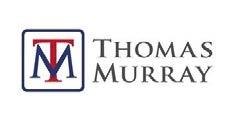

attracted some early capital, they failed to provide the minimum level of market accessibility needed by institutional investors.
Emerging markets may never be the same. On May 31, MSCI added 226 China large-cap A shares to the MSCI Emerging Markets Index. First, let’s look at the composition of the MSCI Emerging Markets Index. The China A shares partially included to the index — large-cap mainland Chinese stocks that are traded domestically — were added in two phases: half of their 5% initial weight occurred May 31, while the balance was added Aug. 31. Historically, it has been difficult for many international investors to trade these shares, though market accessibility has improved in recent years.
The initial inclusion boosted China’s proportion of the index by only 0.8%, to 31.3%, based on May 2018 values. But what if the Chinese market continues to liberalize enough to warrant full inclusion down the road? The A shares market is one of the biggest in the world, with more than 3,000 stocks traded. If full inclusion were to happen, China equities could comprise 42% of the MSCI Emerging Markets Index, with A shares alone accounting for about 16% of index weight (1)
Five years ago, when MSCI floated the idea of adding China A shares to its mainstream indexes, global investors were unenthusiastic. This was because few were familiar with the Chinese domestic equity market even though the MSCI China Index (covering other share classes and Chinese stocks listed overseas) already represented the largest country by market cap in the MSCI Emerging Markets Index. Global investors were unfamiliar with this market because they were unable to access it.
China had cautiously opened its domestic A shares market to the world through efforts targeting institutional investors: The Qualified Foreign Institutional Investors (QFII) and Renminbi Qualified Foreign Institutional Investor (RQFII) programs. While these programs

Thus, the journey to inclusion was far from smooth and took years of effort. In addition to capital mobility restrictions and unequal market access under the qualified investor schemes, investors were uneasy about issues such as uncertainty of capital gains tax (2014), questionable beneficial ownership under the early phase of the Stock Connect program (2015) (2), widespread voluntary stock suspensions (2016) and pre-approval restrictions on launching financial products (2016). Despite numerous setbacks, Chinese policy makers and regulators made significant progress, addressing investor concerns one by one. Finally, when the Stock Connect program was expanded to include Shenzhen-traded shares in December 2016, it provided the breakthrough that global investors were seeking – a market that afforded open accessibility to all investors.
Since MSCI announced in June 2017 that it would partially include China A shares in several of its key indexes, we have seen increased interest in investing in Chinese stocks by global investors as market accessibility has improved:
Over USD 9 billion of net assets flowed into A shares via Northbound Connect during the period from a week before to a week after May 31, according to the Hong Kong Stock Exchanges and Clearing Ltd. (HKEX); which this was broadly in line with the estimated fund flows.

including those being added to the MSCI Emerging Markets Index are held by Stock Connect investors. Stock Connect is rapidly establishing itself as the primary channel to access A-shares.
Various efforts aimed to avoid market bumps. For example, the People’s Bank of China (PBoC) quadrupled the Northbound Stock Connect daily limit to RMB 52 billion (USD 8.3 billion) and the Hong Kong Monetary Authority (HKMA) sought to ensure ample liquidity in the offshore RMB market (CNH) with a series of supporting measures (3). These actions underscored the regulators’ commitment to continue opening the market.
The opening of Special Segregated Accounts, a proxy of international investors’ readiness and appetite to trade A shares, surpassed 5,000 accounts in June 2018, up from less than 1,700 since Stock Connect started three years ago.
As noted above, if the Chinese market continues to liberalize to the point of warranting full inclusion in the future, Chinese stocks — A shares and other share classes — could comprise more than 40% of the MSCI Emerging Markets Index. Additionally, should China A mid-cap shares ever be added to the index, Chinese companies would represent nearly one out of every two investment opportunities available to emergingmarket investors (4). Institutional investors are devoting more time and resources to learning how to navigate Chinese markets.
China would have comprised 31.4% of the MSCI Emerging Markets Index at 5% inclusion as of August 2018 (left panel), based on data used for MSCI’s May 2018 Semi-Annual Index Review. At a hypothetical 100% inclusion (which may or may not occur in the future), China would have comprised 42% of the index, based on the current market capitalization. All figures are approximate.
The partial inclusion of China A shares may also trigger other important investment questions: How should investors evaluate the role of their emerging-market allocations as China accounts for a bigger slice of the index? How does the inclusion of A shares alter the fundamental characteristics of emerging markets? Would systematic strategies work well in China? Can the evolving ESG profile of A shares companies provide insight to investors? And, importantly, how should investors approach emerging market investing going forward? Investors will be seeking answers to these questions.
other’s markets through their home exchanges.

(3) Specific measures include: a 38 billion RMB repo facility with nine Primary Liquidity Providers (PLPs) banks and a RMB 400 billion swap facility; banks with onshore RMB liquidity commit to increase offshore RMB liquidity around inclusion dates; China A shares inclusion trades would enjoy prioritized RMB liquidity around the time of index inclusion; and effective information dissemination among intermediaries and efficient recycling of RMB would be ensured. In addition, the Hong Kong Stock Exchange will also accept U.S. dollars and Hong Kong dollars as pre-payment currencies to ease CNH funding pressures.
(4) Based on data as of May 15, 2018. If China mid-cap A shares were added to the pro forma MSCI Emerging Markets Index, the total number of China securities would be 631 while the number of emerging-market constituents would be 1,320.
Chin Ping Chia Head of Research for Asia Pacific, MSCI
While emerging-market country exposure may become more concentrated if China‘s exposure increases, the inclusion of A shares also may help open the doors to a part of China that was not accessible until recent years. This change may bring potential opportunities and diversification benefits.
Notes
(1) This is a hypothetical scenario for illustrative purposes only. MSCI has not made any decisions regarding whether or not to further include China A shares into the MSCI Emerging Markets Index.
(2) The Stock Connect program allows international and mainland Chinese investors to trade securities in each

If the Chinese market continues to liberalize to the point of warranting full inclusion in the future, Chinese stocks — A shares and other share classes — could comprise more than 40% of the MSCI Emerging Markets Index.
In many aspects, the Bond Connect has changed the “China access” landscape. Three elements are critical here.
Bond Connect’s operation over the past year has been conducted in a stable and orderly manner, helping drive the further liberalisation of China’s bond market. Foreign investors strongly recognise Bond Connect’s institutional strengths as well as its innovative design. Market participation in Bond Connect has been growing steadily, with ADT reaching RMB5.3 billion and RMB6.5 billion in July and June 2018, more than double the ADT in Q1 2018. In addition, the number of approved overseas institutional investors participating in Bond Connect continued to increase. As of 15 August 2018, there were 404 approved investors, compared with 247 as of 31 December 2017.
A steady growth in the foreign holdings of Chinese bonds at the CIBM was observed since the launch of Bond Connect. The outstanding bond amount at CIBM held in the hands of foreign investors rose from RMB 842.50 billion as at the end of June 2017 to RMB 1,612.29 billion as at the end of July 2018, recording a 91% increase during the period. The net increase in foreign holdings registered during this 13-month period was almost 3 times more than the annual increase before the launch of Bond Connect.

Such increase of foreign holdings on CIBM assets, despite recent RMB weakness, draws a stark contrast to late 2015, where a similar RMB depreciation led to asset outflow. This illustrated a structural and sustainable shift of foreign access has been driven by Bond Connect.
First is access efficiency. In the process of open-up of China equities and fixed income, China access used to be coordinated by onshore agent model with relatively low traction towards a very “emerging market” like operating model. With Bond Connect, access is via offshore money holding onshore assets, with no cash balance in China. Trading is also more efficient under Bond Connect. An offshore investor can trade directly with 34 onshore dealers (1) through electronic request-for-quote (RFQ) and native interfaces of established international trading platforms, where the best-execution principle enhances transparency and liquidity of trading Chinese bonds. On the settlement side, investors can appoint global custodians and integrate Bond Connect transactions in their overall post-trade set-up which they would use in a “developed market” model, providing operational efficiency.
Overall, Bond Connect effectively connects the Mainland bond market with international practices, at lower access costs and higher market efficiency (2) , and with no disruption to the onshore market.
The second change is that Bond Connect made major bond index inclusions possible. On 23 March 2018, it was announced that China’s bonds will be, for the first time, included in the Bloomberg Barclays Global Aggregate Index from April 2019 by phases. Once fully implemented, there will be 386 Chinese securities included in the index with a weighting of 5.49 per cent of the US$53.73 trillion Index (based on data as of end-January 2018). The move is expected to drive global allocation to China’s bond market and demand for the Bond Connect scheme. This could also spur similar inclusion in other major indices, which in total has an estimated tracking AUM of over US$5 trillion.
Notably, the conditions precedent to the index inclusion are all linked to Bond Connect – block allocations, DVP, and tax clarifications for Bond Connect, all of which are expected to be addressed following the measures announced by PBoC in July 2018 (3) to facilitate the development of the Bond Connect scheme.
Thirdly, Bond Connect has been a catalyst for wider participation of international buy-side investors. Among the 404 approved Bond Connect investors as of 15 August 2018, 61% are opened by global asset managers and fund managers in the form of various investment products. Greater awareness and clarification about Bond Connect

Launched in July 2017 by the PBoC and HKMA, the Bond Connect is a major milestone in the deepening of the mutual access, being the first time eligible foreign investors have been allowed to invest in the China Interbank Bond Market (CIBM) through a link connecting the domestic and overseas bond markets.Source: CCDC and Shanghai Clearing House
drove more participation from over 10 Luxembourg UCITS (5) funds. More than 10% of the global top 120 asset managers have started to use Bond Connect as indicated in the full list of investors published by People’s Bank of China. Bond Connect has attracted investors from more than 20 major markets across the world. Investors from jurisdictions other than Hong Kong SAR accounted for 45% of the total, up from 34% for the first 300 accounts. Rising interest has brought in Korean and Japanese investors, while more applications are being reviewed.
In terms of investor mix, there are broadly three types of investors beyond central banks / sovereign funds. The first group is the index-driven investors including actively and passively managed funds who tracked major bond indices and are mostly active in gaining exposures in treasury bonds (CGBs) and policy bank bonds (PFBs). The second group is the “smart-money” credit investors, who tend to seek tactical overlay and trading opportunities in the more advanced part of the market such as asset-backed securities / RMBS structures and short-term credit bonds. The third group tends to identify opportunities in the short-end of the curve, and is mostly active in short-term paper / NCD trades taking advantage of high yielding short-term papers.
Bond Connect further opens up the Mainland bond market in a controlled manner, thereby providing new impetus to


the market, and improving accessibility of the market to overseas investors. Looking ahead, market participants are closely monitoring the index inclusion which is scheduled to take place in April 2019, as well as the various facilitative enhancements under Bond Connect.
Notes
(1) As of end-July 2018. http://www.chinabondconnect. com/documents/Participating_Dealers.pdf

(2) Discussed further in the research report “Supporting the Opening Up of the Mainland Financial Market – Innovations and Implications of Bond Connect” published by HKEX in November 2017 http:// www.hkex.com.hk/-/media/HKEX-Market/News/ Research-Reports/HKEx-Research-Papers/2017/ CCEORpt(BondConnect)_201711_e.pdf?la=en
(3) See announcement on http://www.hkex.com.hk/News/ News-Release/2018/180703news?sc_lang=en
(4) Undertakings for Collective Investment in Transferable Securities
Julien MartinSource: CFETS, BCCL
Rely
Why was my back getting so damp? We had emerged from the dense, green humidity of the rainforest quite some time ago, marching higher and higher, into the dry thicket of heather that formed the next belt of landscape which we would traverse in our ascent. I wasn’t sweating, the temperature had turned quite agreeable, and our pace was measured as we were pushing up into the thinning air. So what was it then?

Less than 24 hours ago we had poured out of our rickety bus at Lemosho Gate, into the swirling chaos of porters, guides, wardens and various ranks of organisers. All were busy sorting out the groups of hikers, assigned porters to our duffle bags, channelled it all through an elaborate weighing scheme to ultimately, somehow, usher us all into the correct groups of hikers, our entourages of porters
and other supporting crew. A last beer, a quick photo under the starting gate and off we went, in a single file, into the rainforest, towards our adventure of scaling Kilimanjaro.
Our group was a colourful mix of people from many backgrounds and countries, many sporting their new NorthFace, Salewa and other branded gear, ready to entrust our fate for the next 10 days to the small but powerful figure of Adele, our lead guide, and - not to forget - Ted, her battered teddy and companion of some 20 years of high-octane mountaineering. Adele proved to be an amazing guide, very experienced, humorous and relaxed for the most part, but showing grit when required. Her well mapped-out acclimatisation strategy helped manage the altitude, her many adventurous stories kept us well entertained. The group turned out to be a good mix of people, who gelled well and very quickly, even across generations and language barriers. A real benefit, as we would soon learn, given the many hours spent in close company, and the rather limited alternative distractions in the icy nights of our approach.
A steamy collar of rainforest encircles the massive block of rock and lava that forms Kilimanjaro. A symphony of green, a dense thicket of heavily entangled plants and



trees, offering just occasional glances of cloudy skies. Groups of monkeys were mocking us as we ascended, the air was full of incessant sounds and noises we couldn’t really distinguish. One could sense the presence, all around us, of all kinds of creatures we’d rather not know about. The first hours through this jungle passed very quickly. We began to fall into the slow, hypnotic pace that would take us all the way up the slopes of this big mountain. “Pole, pole”, the chant of the porters, as they quickly raced past us to ready our camp for our arrival, “slow, slow”.
We were now at around 3,500m. Way above the limits of any form of vegetation in Europe, everything around us was still densely green heather, bushes and many varieties of flowers. After the impenetrable canopy of the rainforest, this was now low enough to open to wide views onto the rolling shoulders of Kilimanjaro. One crest after the other rose up in front of us as we marched on, though no sight of the summit yet. “Pole, pole”, time for a break. Time to stop and learn that I hadn’t closed my platypus tightly enough. So that was it: it was my drinking supplies that were dripping down my back! And, of course, soaked much of the content of my back-pack. Way to start! In camp, later this day, I would have to spread it all out for drying, before the light faded and night would freeze it all rock-solid.

A minor calamity you may say - why would we want to know? And indeed, it would have remained a footnote, were it not for the tie. That elegant Network Forum tie handed to me straight from the neck of Mr. Barman, with the challenge to sport it on the top of Kilimanjaro, as a sign of the global spread of our favourite conference organisers. That tie, spread across the roof of my tent for drying, was the one thing that went missing among all my other drying gear. We searched, we asked around, to no avail. Somewhere on that mountain, some porter will now proudly wear his Network Forum tie. No TNF summit picture for me, but imagine the tie scaling up and down the mountain, for years to come.

Relieved of my tie, I had no option but to focus on the rest of the tour. We took our time, “pole, pole”, to acclimatise properly and enjoy the powerful landscape as it gradually dried up and turned into a rocky, dusty moonscape, with amazing perspectives onto the massive summit and the wide horizons of Africa. “Hakuna matata”, no worries, “vizuri sana”, all good. It took us a couple of days to traverse the flanks of Kili and gradually scale to pre-summit levels. Up high into the black gravel zone, and down again to the upper reaches of vegetation, time and again, to negotiate the deep valleys along the way and adjust to the altitude. The weather gods were favouring us, offering sun and blue skies in the morning, amazing sunsets and clear freezing nights. Incredible the density of stars one can see at this altitude. And around noon time, just as the sun started to wear us down, the thermals of the mountain lifted up the collar of clouds surrounding Kili to give us some cover during the hottest hours of the day.
On day 6 we reached Kosovo camp. An unofficial camping spot, some two hours of hard scramble above Barafu Camp, the customary last sleeping site before the final ascent. Named after the Kosovo war zones, apparently, because of its harsh conditions and raging winds. And we added an additional day there, to better acclimatise ... and stage a volleyball competition, in the vain attempt to gain a Guinness Book of Records entry for the highest volleyball game ever. We failed, as there was too much snow above 5,000m, the altitude to beat. But having hired extra porters to drag all the related paraphernalia up to these levels, we had to play anyway, didn’t we. And had a blast. Pole, pole, a steeply sloping field just below 5,000m, but still thin, very thin, air. Maybe not the greatest combination, but a lot of fun.
4am, summit day. “Go-ood mohrning” sang Stanley, the coffee-man and ever-smiling waiter. “Why the hell are we doing this?” asked my brother, as we peeled out of the relative warmth of our bags into the crushing cold of the early morning. Now it was pole, pole, pole. One slow step after the other, the cone of our headlight fixed on the heels in front of us. Manage your breathing, don’t make any abrupt movements, once the rhythm is lost, it’s a very slow recovery. And the headaches were just a few moments of heavy breathing away. We had walked for a while and warmed up a bit when we noticed the early morning light in the eastern sky. Our steps seemed to lighten somewhat, and spotty conversation began to be heard. And then we were treated to the most spectacular sunrise imaginable. Hues of blue, red and yellow began to rise up, the contours of the slopes around us emerged and took on colour. And the dark, steep mass above us, the long, final ascent to the rim of the crater, lit up in all shades of orange and yellow and began to lose some of its intimidating heaviness. We were excited, and ready for the final push.
CONGRATULATIONS YOU ARE NOW AT STELLA POINT read the sign. We had almost made it, the steep scramble leading up to the crater rim was behind us. The first sub-summit of Kilimanjaro was ours. Some 100+ altitude meters to go, time to put on the yak tracks to be able to negotiate the untypically heavy cover of snow and ice gracing the top of the mountain. We could make out Uhuru Peak in the distance, now confident that

victory was within our reach. We almost didn’t need that boost, as the views would carry us along, past the broken edges of the glaciers surrounding the top, and the sweeping spaces across the massive crater towards the distant horizons of Africa. By 11am we had reached the peak. Having started late, we had it all to ourselves. An emotional moment, a great sense of accomplishment. What a memorable trip, what a different world. If only that tie could have made it as well!


Why did BNP Paribas decide to launch US custody services in 2012?
As a top five global custodian, we felt that there was an opportunity to provide a differentiated service in the US, the biggest financial market in the world. You can’t be considered a true global player without having a local presence here.
Today, the US is one of 27 countries in BNP Paribas’ proprietary custodial network. Covering over 90 markets worldwide, our global custody network includes over $11.5 trillion in assets under custody. Additionally, with over 90% of clients’ assets held within our own proprietary network, we can ensure one of the highest levels of operational efficiency and asset protection in the industry.
How do you differentiate yourself in the US?
Advanced technologies, dual-office operations and customized client services are among the elements that distinguish BNP Paribas within the US custody space.
Rather than rely on aging legacy systems, we have crafted a US custody platform that is among the industry’s newest, featuring highly agile solutions that facilitate real-time process management, coupled with a multi-layered security environment. Also, because we have a single system for local and global custody, clients can expect reduced fails, better cut-off times and more competitive pricing.
With command centers in Jersey City, NJ and Lisbon, Portugal, we can offer clients a unique dual-office arrangement giving them ready access to a wealth of global markets covering the Americas, Europe and Asia, while also providing a full 16 hours of daily processing and service coverage (3:00 a.m. – 7:00 p.m. EST), including same-day cut-off for voluntary corporate actions in the US.
Tell us about the different custody models you offer in the US.
In addition to traditional global and local custody, we also offer broker-to-custody and account operator models.
Our broker-to-custody model is available to clients based in Europe and Asia, offering them order entry, routing, monitoring and advanced execution capabilities to ensure seamless processing of their US securities flows.

Under our account operator model, the client maintains full operational control over its end clients’ assets, while we operate their DTCC account, handling all custody-
related processes like trade settlement, corporate actions, tax reporting, proxy voting, reconciliation and cash management.
What is the impact of new technologies on the industry?
Investment in technology and the pace of innovation have drastically increased. Significant advancements in AI, cloud computing, big data analytics and blockchain are having a truly transformative effect on financial markets and institutions.
Our BNP Paribas Digital team is working on three key priorities: improving the customer experience, automating our processes and building services for tomorrow.
Hundreds of Robotics Process Automation (RPA) tools are currently being deployed throughout BNP Paribas. The immediate advantages are an increase in employee and client satisfaction, given manual processes are prone to human error and can be time-consuming.
AI initiatives are also currently being rolled out in certain locations which will improve the customer experience by providing answers with a quicker turnaround, allowing us to better manage our clients’ needs.
Florent Thiry Americas Head of Financial Intermediaries & Corporates BNP Paribas Securities Services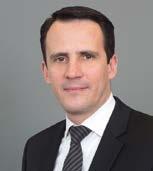
The Belt and Road Initiative (BRI) has generated significant headlines and interest since its inception, and rightly so given its ambitious scale and scope, with somewhere between $1 to 4 TN of investments committed via over 1,000 projects in over 70 countries spanning Asia, Middle East, Africa and Europe.
While much of the focus has so far been on infrastructure, investors have had limited involvement with these projects, given the substantial political and development risks, as well as being primarily led by Chinese StateOwned Enterprises. However, the BRI will also generate secular growth opportunities across multiple sectors in the target countries, with exciting opportunities which are more readily accessible.
In our recently concluded research, we have identified the sectors and countries which will benefit the most from BRI. Typically, BRI investments affect countries through three macro-trends: connectivity, urbanization, and sustainability. BRI-supported infrastructure will increase the movement of people and goods while promoting social connections (connectivity). It will also stimulate the movement of people to urban areas (urbanization), while supporting the building of societies that balance current vs future needs (sustainability).
In our opinion, these macro-trends will have a ripple effect, generating significant opportunities in a number
of sectors. Although we identify more than 20 sectors likely to benefit from this ripple effect in the research, we expect the most immediate and significant impacts (outside of infrastructure) will be on retail consumer goods, vehicles and electronics. Consumer goods will benefit from accelerated economic growth locally, as well as being a major strategic focus area for Chinese exports.
Although the economic benefit of the BRI will be realized across all target countries, our research shows that the level of impact depends on structural factors unique to each country. To help identify these, we used three sets of indicators.
Firstly, the impact of BRI on the beneficiary countries depends on the amount of funds invested by BRI and by Chinese companies via FDI in general. Secondly, the level of development affects the potential impact of these BRI investments, with a higher impact when a country is less developed but having strong institutions to ensure efficient deployment of resources and capture of growth opportunities. Finally, a mature and accessible financial sector increases the multiplier effect of infrastructure investment, while also making it easier for foreign investors to access BRI-related opportunities.
Out of the 70 or more BRI countries (excluding China) the most impacted are primarily South East Asian. Since our analyses takes into account a broader set of indicators than merely the number of BRI projects, this group of high-impact countries includes some that are not usually mentioned, such as Singapore. Singapore benefits from strong institutions and stability, and is a key regional conduit for Chinse companies with Chinese FDI accounting for 11.1% of GDP). Indonesia has a number of BRI projects (~30), and a favorable environment for infrastructure investment and lots of room to grow. Meanwhile, we include Malaysia near the top despite limited BRI projects (about 10), due to strong institutions and robust financial markets to take advantage. Philippines and Vietnam also feature despite the relatively less developed state of its institutions as it has quite a few BRI projects and relatively stable environment.
A moderate, but still highly significant, impact is expected for a second group of well-developed countries. This group includes Poland and Russia in Europe, as well as Israel and Qatar in the Middle East. It also includes a number of other Asian countries including Thailand and Korea who have smaller number of BRI projects that those above.
As the BRI is a dynamic program, there will be ongoing shifts in its geographical and sectoral focus. For example, there seems to already be a shift towards softer infrastructure (such as through trade and transportation agreements and increased cultural ties). There is also likely to be an increased emphasis on digital infrastructures through the Digital Silk Road, which will have a significant impact on sectors such as telecommunications, technology, e-commerce, and smart products.
There are also external factors such as China’s ability to continue funding BRI projects, and emerging political considerations around trade and debt. Despite some of these emerging hurdles, the BRI will likely continue to be highly relevant investment and growth theme for many years to come.
 Peter Reynolds Partner, Oliver Wyman Financial Services
Peter Reynolds Partner, Oliver Wyman Financial Services

Oliver Wyman recently concluded research on the Belt and Road Initiative (BRI). Peter Reynolds from the consultancy outlines some of the findings
As a result, today an investor looking to Europe has a range of options for trading all the main European equities and bonds with simplified clearing and settlement. What are the lessons from this brief history?
1. The private sector had a key role in delivering an integrated European market – brokerage firms providing a single gateway to multiple markets, custodian banks providing pan-European settlement and innovative platforms creating pan-European trading systems.
Pan-European equity trading emerged in the late 1980s when the London Stock Exchange provided a platform called SEAQ-I for trading European equities. This was hugely successful: by 1990 over 50% of Swedish and Dutch share trading took place on SEAQ-I rather than the home market, and so did over 20% of French, Italian and Spanish share trading. The reasons for this were high fixed commissions and turnover taxes and onerous trade publication requirements in the home markets.
However, in 1993 the EU passed an important piece of legislation, the Investment Services Directive (1993), which resulted in trading moving back to the domestic markets. It included two important powers for investment banks: it created passporting, so that investment firms authorised in one member state could provide investment services in other member states; and it gave them the right of remote access to exchanges in other member states. As a result, national exchanges outside the UK removed the requirement to be located locally, introduced electronic trading platforms and removed or reduced fixed commissions and turnover taxes. The result was that an investment bank based in one centre (typically London) could be a member of and trade remotely on markets throughout Europe.
Trading required post-trade arrangements and custodian banks responded by offering clients a panEuropean service built by integrating their branches in individual countries.
At this point in the late 1990s an investor could trade and settle across Europe using one investment bank and one custodian bank, which provided access to multiple national markets. However, it was expensive because of
the need to work with many different national regulations and procedures. Numerous studies demonstrated that the cost of trading and settling in Europe was a multiple of that in the USA.
This led to a push for harmonisation. Particularly notable was the Giovannini Report in 2001, which identified 15 barriers to cross-border settlement, arising out of differences in national market practice, differences in national tax procedures and issues of legal certainty affecting cross-border transactions. Following this report, a work programme got under way to eliminate these barriers, led principally by market participant firms.
The European market entered a new phase with the implementation of the Markets in Financial Instruments Directive (MiFID) in 2007. This opened up the possibility of a trading platform being authorised without the listing obligations of an exchange. The first of these Multilateral Trading Facilities for equities was Chi-X in 2007, followed by BATS in 2010. MTS, originally a trading platform for Italian government bonds expanded to cover all European government securities.
The development of pan-European trading platforms prompted further post-trade developments. Trading was also supported by the development of cross-border central counterparty systems, led by EuroCCP which was launched in 2007.
In 2006 the European Central Bank proposed a panEuropean settlement platform called T2S to link national securities settlement systems, which went live in 2015.
2. Their ability to do this required strong support from the public sector – regulations giving firms a passport to operate across Europe, regulations allowing new entrants to markets, all helped in driving harmonisation to reduce costs.
3. The level playing field created by harmonisation and European passports opened competition between exchanges, trading platforms, clearing and settlement providers and investment firms that resulted in new solutions and increased efficiencies.
4. None of this initially required technical infrastructure. PanEuropean trading platforms arrived more than ten years after Europe came to be seen as one market. They created the need for panEuropean central counterparties and the European settlement platform came last.
Notable in this history is the small role played by national stock exchanges. Unlike other parts of the world, there was no attempt to build links between national exchanges. Each of the two largest pan-European trading platforms now has considerably higher trading volumes than any of the national exchanges.
The overall lesson is that the desire from investors to see a region as one market and a level playing field that enables banks and brokers to support them are the key ingredients in building an integrated regional market.
Hugh Sachs Simpson Senior Partner, Bourse Consult
After twenty years of development, Europe now offers the most developed example of an integrated regional capital market. Institutional investors - and increasingly retail investors, too – treat Europe as one market, investing by sectors regardless of national boundaries. What lessons can Europe offer for other regions of the world?
We asked Bernie Chew and his team at Northern Trust to give us the low down on some of the local life and specialities in Singapore. Happy eating!
Food in Singapore is usually found based on the following:
Criteria
Price (there are cheap and expensive options – so it is up to you – but stay away from the super cheap – there are “tummy” risks involved)
Air-Conditioning (if you don’t have this … you will definitely notice the Singapore heat and humidity)
Queues (this does not guarantee a fantastic meal but it seems to have become a national pass-time)
Instagrammable (this usually would mean nice to photograph but not usually enjoyable)
Local coffee shops, hawker centers (usually can see the hustle and bustle of community life but be prepared for the crowds and the heat)*
Food courts (with air-conditioning)*
Fast Food (don’t unwisely use up the calories)*
Restaurants (Michelin stars to local favorites)
* Please be warned of the “chope” (meaning “to reserve” in local parlance) culture in Singapore – a packet of tissue left on the table or seat is NOT a generous gesture for free usage – it is meant as a form of “reservation” of the seat or table by individuals or a family who is around somewhere to buy their meals. Also note that in recent times, the concept of the “tissue packet” has expanded to include lanyards, name-cards, umbrella, shopping bags … so beware and it is safer to ask first before sitting down!
The widest variety is to head for local coffee shops, hawker centers and food courts which an icon of the Singaporean way of life, each offering numerous cuisines and a wide variety of good food at affordable prices.

Breakfast
Kaya Toast with soft boiled eggs (sets) - A quintessential Singaporean breakfast (& “any time of the day” snacks) of some strong local coffee accompanies with kaya toast this is usually found in any local coffee shops & popular franchises like Killiney, Ya Kun Kaya Toast & Toast Box. The rich texture of kaya, (a traditional jam made from coconut and eggs), combined with an indulgent slab of butter, contrasts delightfully with the thin slices of fresh bread that are toasted over a charcoal fire.
Roti Prata - A fried flour-based pancake, popular Roti Prata variants include adding cheese, eggs, mushroom, onions or even chocolates and strawberries to the batter. The dough is tossed, flipped and stretched multiple times into a large thin layer before folding the edges inwards. Prata is served with fish or chicken curry while some people like to sprinkle sugar onto it.
Wonton Noodles - The dish is usually served either in a hot broth or dry (tossed in gravy and sauce), garnished with leafy vegetables (e.g. kai-lan or kale), and wonton (usually mince pork or sometimes prawns) dumplings. Another type of dumpling known as shui jiao is sometimes served in place of
wonton. It contains prawns, chicken or pork, spring onions with some chefs adding mushroom and black fungus.
Char Kuey Teow (literally “stir-fried rice-cake strips”) –This is a perennial favorite stir-fried over very high heat with light and dark soy sauce, chilli, eggs, deshelled blood cockles and bean sprouts. It is traditionally stir-fried in pork fat, with crisp croutons of pork lard – so this is a great “health food”
Nasi Lemak - Delicious coconut rice, served with hot chilli sauce, fried anchovies, fried peanuts, sliced cucumber or tomato, and hard-boiled egg. At lunch the same coconut rice would be accompanied by meat (chicken, rendang beef, fish) & vegetable (stirred fried or curried vegetable) servings as well.

Dim Sum (good but not to the standards of Hong Kong …) – this is usually found in restaurants …
Lunch and/or Dinner
NB: Lunch & dinner items (below) are interchangeable or repeatable!
Chicken Rice – Fragrance rice served with bite-sized (steamed) chicken pieces, eaten with a spicy ginger & chilli sauce. An all-time favourite for Singaporean and visitors alike! One of the most quoted stall is the Tian Tian Chicken Rice stall (recommended by the Michelin Guide’s Bib Gourmand) which is at Maxwell Food Centre – located at the foot of Club Street and Ann Siang, you’ll find local foods as well.
Bak Kut Teh: pork ribs soup, is a popular Chinese dish in Singapore which consists of pork ribs stewed with a mixture of fragrant herbs and spices such as garlic, cloves, cinnamon, star anise, fennel seeds and coriander.
Satay – marinated chicken, beef or mutton meat grilled on skewers over an open charcoal flame – which is usually served with a sweet & spicy peanut sauce and eaten with onions, cucumber & ketupat (compressed rice dumpling).
Lau Pa Sat (Old Market) and MakanSutra Glutton Bay food center are the popular locations for good hawker fare in the Central Business District.
Laksa - spicy noodle soup – consisting of rice noodles or rice vermicelli with chicken, prawn or fish, served in spicy soup based on rich and spicy curry coconut milk. For the adventurous, you may also like to mix in a spoon of chilli paste into the soup before you start with the noodles … it will definitely get you perspiring!
Chilli Crab is among Singapore’s greatest culinary inventions, the king of all crab dishes. It is easily available in most seafood restaurants, which typically serve it with mud crabs that have deliciously sweet and juicy flesh usually from Sri Lanka (which exports it larger crabs and the smaller ones are usually for domestic consumption – so the best & biggest Sri Lankan crabs are available other than in Sri Lanka).
Some of the more famous restaurants are: Jumbo Seafood, No SignBoard, Long Beach … these larger franchises are available dotted around central Singapore either as standalone restaurants or in shopping centers – best to call ahead for a reservation!
Fish Head Curry is unique to Singapore, the epitome of a cultural melting pot. It mixes the spices of a typical South Indian curry with the fish head, a delicacy among the Chinese.
Bernie Chew Senior Vice President, Northern Trust






One entry to 18 markets


My love for New York City started in my youth. I’d skip school and sneak down on short clandestine visits from Boston with my friends, without our parents knowing. I needed to be there. It was so exciting, and there were surprises and fun to be found everywhere! We would have no plans of what the adventure would entail, and just wonder through the rows of books at the Strand, sort through stacks of vintage punk rock records in Soho, or scour the listings for live bands in search of shows which we might be able to sneak into, occasionally even getting into/kicked out of a few. I loved exploring and getting utterly lost wandering her streets, and I still do. Now, when I play tour guide for friends, I always ensure they experience these favorite highlights.
My perfect morning starts with breakfast from a street food vender. They are on virtually every street corner during the morning rush, essential fixtures of the culture of the city. My preference is always a sandwich “on a roll”. You also cannot go wrong with the amazing hand-rolled bagels (NYC fresh bagels are not to be toasted…don’t dare even ask). Then we’re off for a stroll over the Brooklyn Bridge, from the Brooklyn side into the City and all of its architectural majesty. Right about now, the start of Fall, is the perfect time of year for this. The footpath is safe and high above the traffic for a very pleasant experience and endless photo opportunities. The bridge is incredibly beautiful with its massive towers and open truss design. The 1.1 mile walk will take approximately 30 minutes and you will arrive Downtown in the Financial District.
While downtown, head west to the reflecting pools at the site of the World Trade Center and take in the enormity of history and the sanctity of the place. There, you can wonder through architect Santiago Calatrava’s extraordinarily Oculus building, a tribute to overcoming
tragedy and a new soaring transportation hub and retail space which easily takes its place amongst New York’s other famous structures like Grand Central Station, the Empire State Building or the Statue of Liberty. Here, you can find Eataly for all things celebrating Italian cooking, or head over to Brookfield via its walkways linked to the Oculus for a similar experience featuring a celebration of French food. From Brookfield, there are ferries which run Uptown, or over to New Jersey. Taking the ferry is the most pleasant form of transportation in the city, and most cost efficient, where you will experience more fantastic views of the City. Ferries are also available from near Wall Street on the West Side over to Brooklyn.
From the Ferry to Midtown, W 39th St., you can easily access the High Line. It is a park that begins at W 34th St and Eleventh Ave, built on top of a raised, disused train bridge, with fantastic views of the Hudson, and fun street vendors selling delicious coffee and ice cream.
Dinner would be at Miss Lily’s 7A Café at 109 Avenue A which features delicious Jamaican and West Indian fare, island-inspired drinks and a huge rum collection. It also happens to be across from the famous mural of the Clash’s Joe Strummer.
For drinks, the Dead Rabbit Grocery and Grog at 30 Water Street, cannot be missed! It just re-opened after a fire in July, and consistently features among the top bars in the world, and lives up to expectations with classic cocktails. It gets packed, but manages to feel cozy and not be overwhelming in its spread over 3 floors.
For a quick snack, the Meatball Shop has 6 locations across NYC (I have actually only tried 4 of them), including one within a 5 minute walk from the conference! Surprisingly, they serve meatballs. Walk over to their spot in Hell’s Kitchen at 798 9th Ave.
After a thoroughly successful Africa Meeting in vibrant Cape Town, The Network Forum’s (TNF) flagship Annual Meeting event swapped Warsaw for Vienna in 2018 and was attended by over 450 delegates from across the entire post-trade industry. During the course of the dynamic two-day conference, industry experts provided their insights into some of the major changes and challenges that are currently impacting the securities services’ landscape.
While previous TNFs have extolled the benefits of Blockchain, robotic process automation (RPA) and artificial intelligence (AI) were far more prominent in this year’s line-up. The benefits of robotics are well documented (i.e. the speed and accuracy of its processing of repeat or regularised operational activities), but banks and infrastructures are starting to ask more pointed questions about the technology’s actual applicability and usability.
The industry has spent years automating inefficient processes and experts are beginning to have doubts
about integrating RPA into operational procedures, which have already achieved STP. AI brings its own advantages nonetheless (i.e. chatbots, identifying risks or behavioural irregularities), but many in the custody industry believe its real value is in data analytics, namely the aggregation and dissemination of market information to clients.
One buy-side firm said that in a world where custodians are racing to the bottom on fees, he would willingly pay for good quality market data, something which would help the industry as it grapples with a decade of sustained poor growth. However, monetising data is not without its challenges as many firms are beginning to discover.
Historically, custodians said the biggest impediment to the successful delivery of big data analytics to clients
was the accuracy of the information being fed into AI machines. That concern still holds true, but some organisations are beginning to question whether the information they have is actually of any value to clients given the commoditised nature of the securities industry. If this turns out to be the case, then clients will not pay for data.
An industry veteran once commented that when the local barber starts dolling out stock buy recommendations, it is probably wise to unwind your holdings. Crypto-assets (which includes crypto-currencies such as Bitcoin, ICOs, and securities issued via Blockchains) are virgin territory for many investors, but in a world of depressed interest rates, they are proving to be appetising for people looking to make quick, fast returns.
Crypto-assets are not short of critics who argue they are unregulated and susceptible to fraud and money laundering risk (as is the case with ICOs); volatile (Bitcoin was priced at $19k in December 2017 but is now trading at below $6k); vulnerable to hacks (too many to list here) or simply not understood (who honestly can eloquently explain the fundamentals behind some of these perverse valuations and price movements?). For these reasons, custodians are in no rush to service crypto-assets. While a handful of institutions (mostly hedge funds and family offices) have invested in cryptoassets, most of the money flows from private individuals, meaning the risk-reward for custodians makes little sense, particularly given the liabilities they incur under AIFMD and UCITS V (in the very unlikely event a UCITS actually invests in crypto-assets).
But is this mindset short-termist? One expert pointed out the majority of mutual fund investors were aged 55, whereas most crypto-asset holders were under 30, adding that he expected the bulk of hedge funds and asset managers to be trading in crypto-assets in the next two years. If this happens, banks will probably start servicing crypto-assets, but for now the market is too small and too unknown for the business case to be entertained.
Regulation has been synonymous with post-trade over the last decade, but now is the time for reflection. Initiatives such as CSDR were praised at TNF for achieving industry-wide standardisation and for improving settlement discipline across markets. The same is true of EMIR, although some TNF participants said the regulatory focus needs to be more concentrated
on preventing CCP failures in the first place and strengthening default waterfalls as opposed to the current emphasis on risk and resolution planning.
While not a regulation but rather an ECB sponsored initiative, Target2Securities (T2S) has been a prolific subject matter at conferences since the idea was first conceived in 2006. The final migration wave concluded in September 2017 as CSDs from Spain and the Baltics joined the platform. Despite the lofty ambitions of T2S, the results are proving to be sobering for the industry, having invested so much of their resources into the project.

While T2S’ harmonisation successes – such as the use of ISO 20022 SWIFT standards, uniform treatment of collateral and execution of partial settlements, are welcome, cross-border transactional volumes have been subdued and below expectations, meaning some of the promised settlement cost benefits have yet to be realised. In fact, transaction costs are actually rising as T2S has said it plans to increase the 15c transaction charge to 19c, while it is also introducing an additional surcharge on top of that fee.
Charles Gubert Founder, GTL Associates




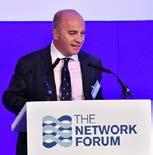


















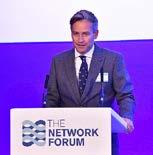
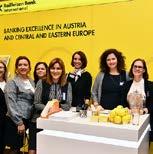

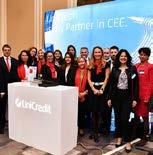


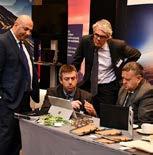
After a great launch in Hong Kong in 2017, we are delighted to be hosting the Asia Pacific Network Management community in South East Asia in the powerhouse of Singapore. Given the wide breadth of developments across Asia, we have expanded the agenda to a full, 2-day event. Expect to see the region’s key NMs, Direct Custody providers and FMIs for a top notch get together.
See you in The Lion City!
In March 2018, The Network Forum held their inaugural Africa Meeting in Cape Town. With industry representatives joining from across the African continent, as well as a healthy representation of NMs coming down from Europe, Asia and USA, we couldn’t have hoped for a better launch. To get a grip on all the major market developments from key players driving this rapidly evolving region, we would like to invite you to THE Africa event.
See you in The Mother City!
We are delighted to announce that our 3rd Annual Meeting will take place in Athens. Join over 450 of your peers from around the world for three days of unrivalled networking, insights and debate in one of the world’s oldest and most beautiful cities. Our flagship event, the Annual Meeting is your chance to grapple with the major issues facing the industry, including new regulatory and technological developments, as well as catch up with industry colleagues.
See you in the City of the Violet Crown!
The Network Forum is a curated global community for the custody, settlement and post-trade industry. Its main aim is to provide a structured networking environment for this tight-knit industry group, in which key issues are discussed, developments are communicated and best practice shared.
Please be sure to visit our website to see all details of our upcoming events, as well as various thought leadership pieces and articles. In addition, we have some great video interviews and video highlights of the Annual Meeting accompanied by some wonderful photos of the community both hard at work, and enjoying a bit of “off the record networking”.
www.thenetworkforum.net
We are honoured to have been supported in the launch of The Network Forum by our Founding Partners below.